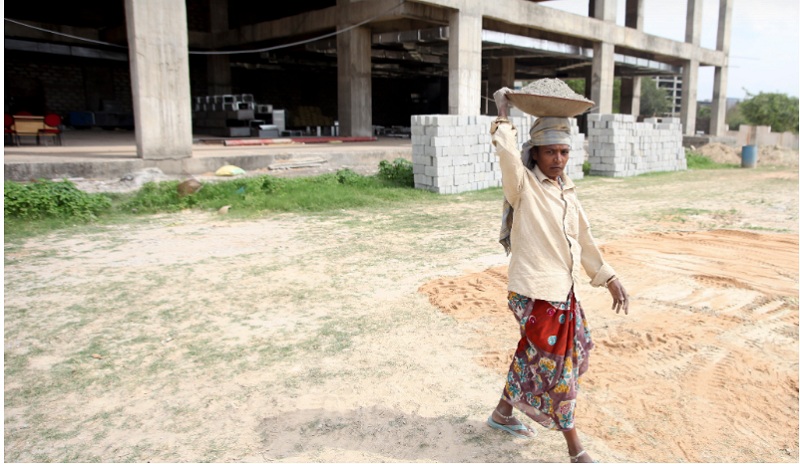By Deepanshu Mohan
India’s economic ascent to a US$4.2 trillion GDP in 2025 has been hailed as a historic achievement. The country is now ranked the world’s fourth largest economy by current dollar terms, surpassing Japan. From summit speeches to television debates, the triumphalist narrative hides a quieter, discomforting reality.
For a country of over 1.4 billion people, the scale of economic output should mark a turning point: better living standards, more opportunity for its citizens and stronger government support for basic needs. But when measured against how much the average Indian earns, the picture begins to fracture.
At just US$2,880, India’s per capita income lags behind much smaller economies like Vietnam ($4,810) and the Philippines ($4,350). In global terms, it ranks around 139th in per capita GDP. The average Indian earns in a year what a German earns in under a month, more than an income gap, it’s a gulf in life chances
This is not just a problem of inequality but a deep-rooted pattern of systemic exclusion. The World Inequality Report 2022 shows that the top percent of Indians hold over 33 percent of the country’s wealth while the bottom half, over 700 million own just 5.9 percent.
Economic growth in India has become intensely vertical, enriching those already ahead while failing to uplift those who are most in need.
Meanwhile, macroeconomic stress is quietly eroding household resilience. In 2024, 62 percent of India’s poor were “newly poor,” hit by illness, job loss or inflation. Household debt rose to 42.9 percent of GDP; middle-class savings fell from 84 percent in 2000 to 61 percent in 2023.
These shifts suggest that economic growth is not trickling down. Rather, it is trickling away.
The $4 trillion headline figure tells only one part of the story. The other part is a paradox of extraordinary expansion without equitable uplift. This raises a critical, unresolved question: how can India claim economic greatness when so many of its people remain economically invisible?
This dilemma—of expanding GDP coexisting with deepening precarity—represents a deeper crisis of India’s shift from jobless growth to what now resembles ‘job-loss growth’. It leads us to one of India’s most persistent and now worsening economic failures: the erosion of employment itself.
Job-reverse growth
What was once labelled jobless growth has begun to mutate into something even more insidious. India is now confronting a phase of job-reverse growth, where the forces powering the economy—automation, digitalisation and elite-sector dominance—are not just failing to create jobs but actively making them disappear.
A 2024 report projects that 24 percent tasks across industries have full automation potential, and Generative AI (GenAI) could transform over 38 million jobs by 2030. With its ability to code, write and interact, GenAI is now poised to disrupt over 2.3 million job roles by 2027, once seen as stable and future-proof.
This is a present reality with top IT firms such as Infosys and TCS having already eliminated 22,000 roles in a single year along with a sharp decline in fresher hiring, which was most evident in 2024.
Yet, this upheaval comes in a context of extreme vulnerability. According to the latest Periodic Labour Force Survey (July 2022–June 2023), over 78 percent of India’s workforce remains engaged in self-employment or casual labour, forms of work typically lacking job security and social protection.
Among regular wage or salaried workers, 58 percent have no written job contract and over half are ineligible for any form of social security benefits such as pensions or health insurance. In other words, job loss doesn’t mean simply switching sectors; it often means falling off the edge altogether.
Young Indians are especially at risk. Of the total unemployed, 83 percent are aged between 15 and 29, and more than 40 million students enrolled for higher education. India needs 12 million jobs annually to absorb new entrants. Based on a growth rate of 7 percent, India can only generate 8-9 million jobs a year.
Women have fared even worse. Female labour force participation, already among the lowest in the world, dropped to 37 percent in 2022-23. Urban female unemployment hit 24 percent in 2021–22, worsened by automation in retail, customer service, and education.
Even as the service sector now accounts for over 52 percent of India’s GDP, it directly employs around 160 million (PLFS 2022-23), but low-quality jobs (street vendors, gig workers) dominate. Agriculture employs 42 percent of Indians but contributes just 15 percent to GDP, with little scope for mobility.
There is a profound disconnect between where India grows and where Indians live. The economy’s elite layers are not only isolated; they are also self-reinforcing. They draw investment, talent and policy focus while the rest are told to wait their turn.
Exclusionary growth
The real question India must confront is not whether it is rising but who it is rising for and what it is rising without. The obsession with matching major economies on output alone has eclipsed the foundational metrics that sustain equitable growth: how a nation taxes, how it employs and how it governs from the ground up. These are not side issues; they are the scaffolding of every successful economy India hopes to emulate.
India’s fiscal architecture, for instance, bears little resemblance to those of the countries it now neighbours in GDP rankings. With a tax-to-GDP ratio of just 11.7 percent in 2024, India collects far less revenue than Germany or Japan, both of whom sustain extensive public services through ratios exceeding 30 percent.
This shortfall is not an accounting flaw; it is a political failure. Without adequate taxation, the Indian state cannot fund universal healthcare, strong public education or basic income guarantees. And crucially, it cannot redistribute. Unlike most OECD nations, India imposes no inheritance tax, levies no wealth tax and rarely touches the capital gains of the ultra-rich. A democracy cannot be meaningful when its fiscal policies entrench rather than correct inequality.
This silence on redistribution is matched by a dangerous indifference to the labour question. The same GDP growth celebrated in press conferences is powered by sectors that deliberately avoid large-scale job creation. Finance, technology and capital-heavy services drive the boom but leave millions locked out.
At the same time, labour-intensive sectors like agriculture and manufacturing either stagnate or shed jobs due to automation and lack of investment. With over 90 percent of the workforce informally employed, economic growth becomes a paradox: expanding national output without expanding household security.
The institutional structure to address these gaps is also faltering. Constitutionally responsible for core services, Indian states remain financially stifled, dependent on central transfers and unable to fund essentials like health, education and jobs.
Unlike federations such as Germany or the US, where states have independent fiscal powers, India’s federal design has become top-heavy, reactive and politically fractured.
A global GDP rank may invite applause, but it cannot mask this hollowing of state capacity, social protection and inclusive opportunity. To rise in lives, not just rankings, India needs course correction and resolve.
Deepanshu Mohan is Professor of Practice and Director, Centre for New Economics Studies, Jindal School of Liberal Arts and Humanities, O.P. Jindal Global University, Sonipat, Haryana.
Ankur Singh is a Research Analyst, Centre for New Economic Studies, O.P. Jindal Global University, Sonipat, Haryana. He contributed with research.
Originally published under Creative Commons by 360info™.














